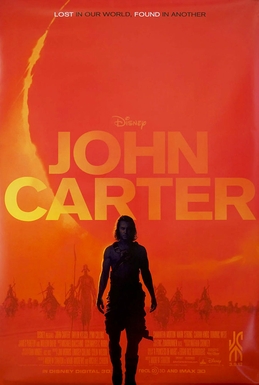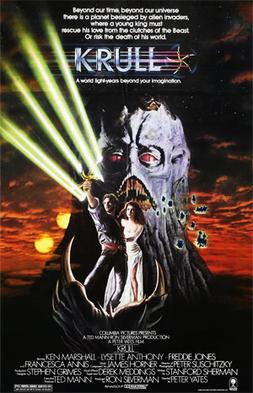Primer 2004
”Are you hungry? I haven't eaten since later this afternoon.”
Primer is a head-spinning and brilliant movie about the perils and paradoxes of time travel. But it’s also a movie about how to handle and create value from a scientific discovery, and the lack of integrity and experience necessary to use the invention wisely.
The story begins with four friends in a Dallas suburb – Aaron, Abe, Phillip and Robert – who run a marginally successful garage venture. They are experimenting with some sort of superconducting device. When Aaron and Abe discover that the invention has time travel as an unexpected side effect, everything changes.
If you are looking for a Back to the Future Terminator kind of movie, you’re in the wrong theatre. The strength of this movie is in the very clever storyline. Primer was done with a $7,000 budget. The lack of special effects, or even standard digital tricks, actually benefits the movie.
It’s the manner in which the innovators deal with their discovery that gives Primer its depth and credibility. The movie shows scientific discovery in a realistic and down-to-earth manner. And start-ups work in locations no more glamorous than Aaron’s garage. They buy electronic components from Walmart, they cannibalize a microwave oven to get a magnetron, Freon from a refrigerator, Platinum from a catalytic converter.
There’s a lot of tech jargon in the movie. Former engineer turned filmmaker Shane Carruth didn’t dumb-down the movie dialogue for a broader market. The beauty of Primer is that it matters far less that you get the jargon and much more that you understand the big picture. Watching the guys talk about their invention is a bit like being at a party listening to a nerdy discussion. You don’t get the details, but you get the idea. It gives the movie an air of believability.
Aaron and Abe discover that their invention can alter time for objects inside their machine. They decide to keep this discovery from their two friends and secretly build a larger version of the device in a nearby storage facility and use it for time-travels. They cannot go back in time more than a few hours, but it’s enough to for example beat the stock market.
To late they realize they can’t control the chain of events. During the time they go back in time, their doubles are still walking around making decisions that can impact their future present.
The really cool thing with the movie is, that if you start messing around with something you can’t control (the time-space continuum), there is no way to reverse the chain of events.
Every time Abe and Aaron try to fix a mistake, they make layers of changes on top of each other. And make things even worse. The first layer of paint you apply before you do the real painting is called a “primer”. Abe and Aaron keep re-living and trying to fine-tune the same events to get it right, like applying new layers of paint over a familiar painting.
Their steady downward spiral proves to be dreadfully compelling. We watch them expand and contract reality into permutations that, once understood, are horrifyingly unsettling.
Soon they find more and more strange unexpected evidence of their time-travels everywhere. For instance, one night they run into the father of a friend to Abe, who wants to invest in the machine, or maybe already have in an alternative future as he has already used their time machine. The reality, in which his trip to the past occurred – Abe and Aaron’s present, that is – has been changed by Aaron and Abe and no longer exists. Yet the man is still present in the present world, but now he never even made the trip in the first place. Now he’s just a time travel byproduct, a side effect of the process.
They believe they can actually master a moment; control the direction of time and produce beneficial outcomes. Maybe not at all once. But eventually.
They start out like normal guys, with no problems or moral dilemmas. As the movie continues Abe and Aarons personal motivations are more and more revealed and soon they are faced with bigger and bigger moral issues.
They have the potential to change events, or simply muck with causality: Abuse the stock market, prevent a potential murder, punch your boss in the face then go back and stop yourself, or the real kicker – kill yourself and change history so that it never happened. Aaron pictures himself hitting his boss “just to know what it feels like”, and then explains that he would subsequently prevent himself from the act by intervening before it occurred.
They begin to experiment on their own. Faced with a new world of immeasurable power they respond with greed and pride. As the questions get bigger, they find themselves bending and then breaking their time traveling rules to help themselves.
They start to betray their friends and lie to each other. Abe and Aaron’s friendship crumbles under crumbling moral rules. Fear, paranoia and greed supersede any chance of trust.
The movie illustrates not only how far we would go if we were given the power of the Gods (or at least to interfere with other peoples lives and actions), but also the consequences. If you had a machine that could help you change history, how would you use it? Would you play the stock market, or save a girl’s life at a party to look like a hero? Would the omnipotence make a person more kind, or more evil?
The movie’s low key makes the omnipotence and how it corrupts more urgent. These guys are engineers and scientifically clever, but morally as badly prepared as we all are: we seldom think of the consequences of our actions because we seldom discuss moral issues of our actions.
Primer is eight years old, but it gives an intelligent comment to today’s social media revolution, like the way Facebook, FourSquare and all the others that mess with our integrity without really knowing the consequences. Can we preserve dignity and privacy when we voluntarily give away our entire life to Facebook? How and why did we get to the point where almost all of our activities leave a trace? Are we willing to let both the state and commercial companies into our bedrooms? The technology has taken humanity to a tipping point, and nothing will ever be the same. There are definitely parallels between this discussion and the moral questions raised in Primer.
Now, if you don’t care anything about innovation ethics, you should watch the movie for its ingenious portray of the perils and paradoxes of time travel.
For example: Aaron is eating breakfast in his kitchen. Let’s call him Aaron 1. He suddenly passes out. He passes out because Aaron 2, a future version of Aaron1, has traveled back through time and drugged Aaron 1’s milk before Aaron 1 entered the kitchen to eat breakfast. Aaron 2 then drags Aaron 1 upstairs and stows him in the attic. Aaron 2 goes back downstairs and enters the kitchen, but then a future version of Aaron 2 has traveled back through time and attacks himself. We will never know what would have happened if Aaron 2 hadn’t used the time machine to become Aaron 3 and change the events because those events never happened. Aaron and Abe successfully invest on the stock market, but don’t end up rich at the end of the movie, because future Abe and Aaron change their own past to prevent themselves becoming rich in the future.
Confused? I think it’s awesome. The film ends with five simultaneous timelines, but the permutations of history are endless.
More than any other time travel movie I’ve seen, Primer makes you feel as if time travel is for real, with real consequences. At the Aha moment (at least for me), it throws the viewer into the same situation as the story characters, when Aaron and Abe observe their doubles from afar and realize that they have no way of knowing whether either of them, without the knowledge of the other, has already altered their past. Mistrust has introduced an unknown variable into their equation.
Primer is one of those very rare movies that gives Hollywood a real kick in the butts to say, “THIS is how you create a thriller, dumbass!”
It’s not about the budget. The movie itself is virtually a garage invention. A glimpse of a microphone here, hearing a whispered “cut” now and then, the grainy 16 mm texture – they’re all fine. It’s amazing what a shoestring budget and a vision can do.
The strength is the way Primer show how we think we are modern, but emotionally and ethically no better than cave men. If you like intellectual, intense, dramatic, sci-fi movies, then you’ll like this film.
Hands down, I love this movie.
Grade: A+






_movie_poster.jpeg/443px-Immortel_(ad_vitam)_movie_poster.jpeg)